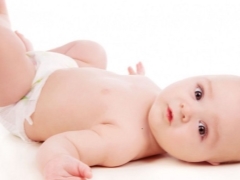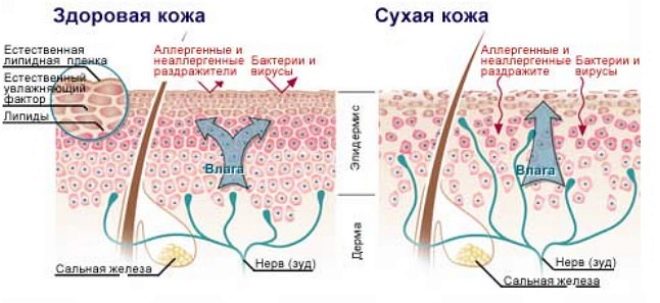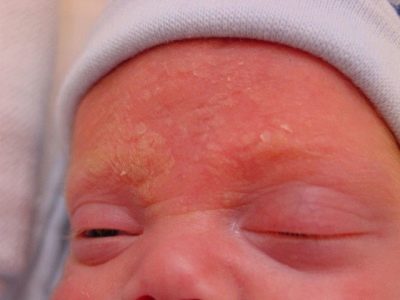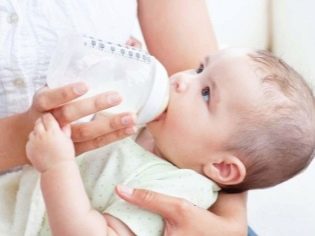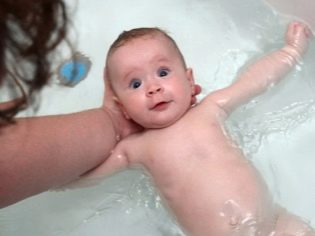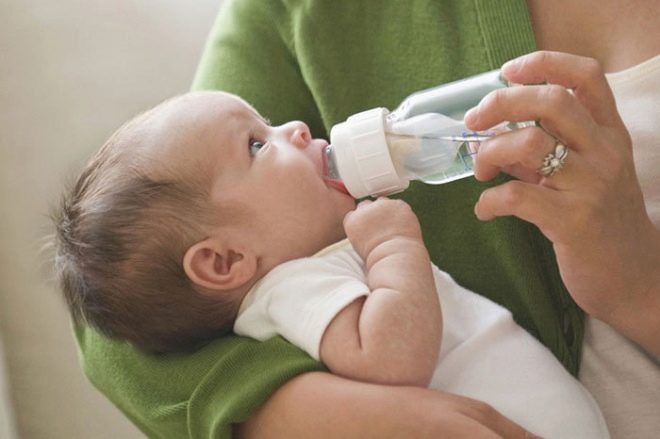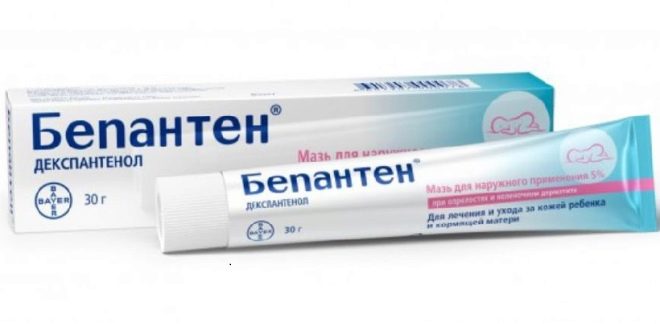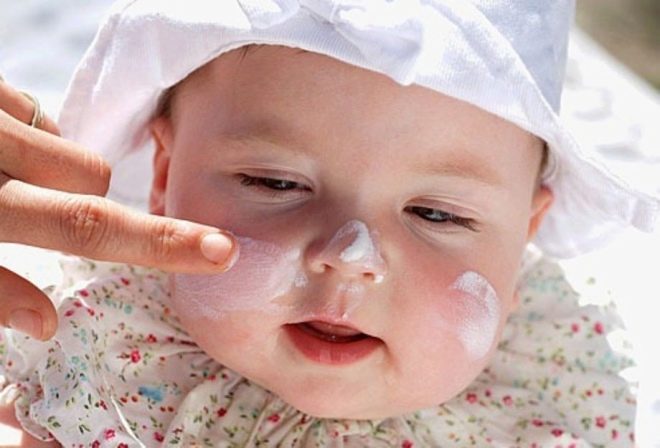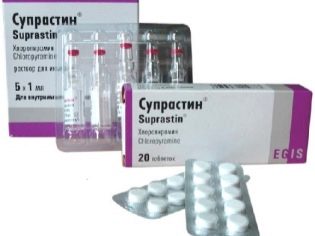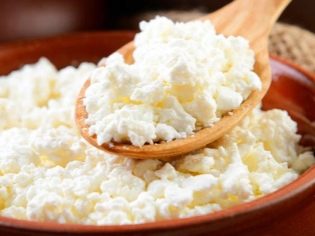What if your newborn has dry skin?
Newborns are rarely born with dry skin. More precisely, this is almost impossible. All babies are born with an adequate supply of subcutaneous fat. However, the skin of a newborn may become dry, and this should not be overlooked. What to do if the crumbs of dry skin suddenly show up, we will tell in this article.
The reasons
The natural protection of delicate baby skin is the lipid layer. However, the sebaceous glands that produce fats, the newborn does not work in full measure. Their activity is closely related to the hormonal background, and in infants, like in the adolescent, it is unstable.
Under the influence of maternal hormones, which the baby got after delivery, in the first six months, the sebaceous glands can produce too much lipids, which leads to children's acne, or they can become "lazy" and then the skin becomes too dry.
A variety of factors can affect a baby’s skin condition:
- Air too dry in the roomwhere the child lives. Especially often this happens in the cold season, when parents, so that the child does not freeze, turn on the heater in the nursery.
- Excessive hygiene. The skin is very quickly drained detergents - soap, foam, gels, even if they are provided with a mark on the package, saying that the product is child-friendly and hypoallergenic. If you wash and bathe the child with soap every time, as soon as there is a need for this, then the skin becomes dry after a week of such procedures.
- Lack of hygiene. Dry skin can become if its dehydration is due to the inflammatory process. If you rarely wash your baby, change the diapers untimely, the skin folds and groin area will first become inflamed and then covered with dry spots, which can cause quite painful cracks.
- Metabolic disease. The cause of dry skin in an infant can be problems with the thyroid or pancreas of a congenital or acquired nature. Often, dry skin causes chronic thirst if the parents do not give the child water in sufficient quantities. This is especially true for children of artificiality.
- Lack of vitamins. Two vitamins, A and E, are responsible for the integrity and elasticity of the skin in the human body. If the mothers who are breastfeeding do not have enough of these vitamins, then the baby will not get enough of them. In bottle-fed babies, such a deficiency is usually not observed, since all infant milk formulas are enriched with all the necessary vitamins in the required daily amount.
- Allergy. Dry red skin on the body, behind the ears, on the cheeks, on the face, on the forehead, on the buttocks may indicate that the child’s body does not adequately respond to a certain protein antigen. This may be food, medicines, and maybe - substances that are part of the laundry detergent, which the mother uses to wash children's clothes, bed linen and her own clothes.
- Exposure to external temperatures. The skin of infants who are bathed in too hot water (above 38 degrees), as well as children who live in an apartment where it is too hot or too cold, is most susceptible to dryness. In this case, the loss of moisture by the skin is quite rapid.
Danger
Deprived of lipid protection, the skin of a newborn becomes very vulnerable to injury. On it faster wounds, cracks, scratches.The upper layer of the epidermis of babies is better than in adults, is supplied with blood. For this reason, babies wounds heal faster. However, in the case of dehydrated, dry skin, intensive blood supply only harms, increasing the likelihood of microtraumas, which can then become open “gates” for penetration into the body of various pathogenic bacteria and fungal pathogens.
A child with extensive skin lesions becomes nervous, moody, his appetite and sleep deteriorate. This is caused by itching, which is accompanied by exfoliation of dry scaly epithelium. Cracks, which can be formed in this case, cause pain.
Diagnostics
A child who suddenly had extensive dry skin areas should be shown mandatory by a pediatrician and, possibly, a dermatologist. It is important to exclude bacterial and fungal infections, as well as allergic, atopic and contact dermatitis. The baby will take a blood test, feces, and skin scraping to identify pathological factors. Only after that will adequate treatment be prescribed.
However, in most cases, according to pediatricians, the real reason lies in the violation of the hygienic rules by the parents themselves, so the problem of dry skin should be solved at the household level. How - the doctor will prompt and teach.
Treatment:
- Noticing the baby dry areas of skin, redness, it is worth starting with checking the microclimate in the apartment - Is it suitable for the normal growth of healthy babies. To do this, measure the air temperature and its relative humidity. The temperature at which the air does not dry out does not exceed 20-21 degrees of heat, in the recommended humidity parameters - 50-70%.
- If there is no special device - an air humidifier, can be hung on the batteries in the apartment with water soaked towels, put an aquarium in the children's room, more often do a wet cleaning in the children's bedroom, remove away from it everything that house dust can accumulate - carpets, soft toys.
- Into the diet of the child must enter more drinking water.. It is necessary to feed the newborn between feedings with the help of a bottle with a teat or a teaspoon. It is important to ensure that the child does not overeat, because overfeeding causes problems with metabolism, undermines the normal state of the pancreas.
- It is necessary to bathe a child with dry skin in warm water. (not higher than 37 degrees), and the door to the bathroom should be tightly closed so that the steam does not leave, because additional moisture does not hurt. Use soap, even baby, babies with such a dermatological problem is not allowed more often than once a week. All the rest of the time, he must take baths, for which the parents boil water in advance to rid it of chlorine. If you wish, you can add a small amount of chamomile or calendula broth to the water. The main thing - no potassium permanganate!
- After bathing, you can not rub the skin, especially the affected areas, a towel. It only hurts her. It will be enough to blot the skin with a cloth or a soft baby towel. It is forbidden to use powder for dry skin - talc only dries in addition.
It is best to lubricate clean skin "Bepantenom". With dryness, Bepanthen quickly and effectively moisturizes the epidermis, and also relieves inflammation, if any.
- With the appearance of crusts and peeling on the skin should not try to remove. This will only a few times increase the risk of a bacterial infection. To soften the crusts it is allowed to use oils - warm sunflower, olive, petrolatum, and also peach or apricot.
- Dry areas can be lubricated. and the usual baby cream. When choosing a better stop on the cream with the addition of aloe oil. If the skin flakes on the arms or legs, you can lubricate the affected areas with oily solutions of vitamin A and E.
- Baby clothes and bedding should be washed only with baby washing powder.if sharing sleep with parents is practiced, adult bedding should also be washed with the same product. Clothing and bedding should be made from natural fabrics without textile dyes. This means that bright things should be abandoned in favor of the usual white linen.
- A child with dry skin does not wear sunbathing in the open suns. If you plan to walk, lubricate the skin crumbs permitted by age means to protect against UV rays. At any time of the year, air baths are helpful, as well as a gentle circular massage, which stimulates the blood supply to the skin and the sebaceous glands.
Thus, the main treatment is the creation of the right conditions for the growth of the child. In most cases, the measures listed above are quite enough so that you can forget about dryness. But if, despite the best efforts of the parents, the skin continues to dry, crack, peel off, the area of the lesion increases, you will have to go to the doctor’s office.
Medication Treatment
Special medication may be needed only if the child is diagnosed with diabetes, atopic dermatitisallergy. In case of an allergic reaction, ointments with hormones, for example, “Advantan", As well as antihistamines (" Suprastin ")which will reduce the manifestations of allergies.
The main condition for successful treatment is to stop contact with the allergen. If it cannot be identified, parents will have to protect the child from the effects of any potentially dangerous antigens - plant pollen, cow protein, etc.
When joining a bacterial infection, which can be guessed by the occurrence of pustules, ointments with antibiotics will be prescribed, for example, "Levomekol" or "Baneocin". When a fungal infection is detected, which has led to the desiccation of the affected skin, antifungal treatment is prescribed - ointments and preparations for internal use.
Prevention
Simple measures which should be observed from the very first day after the child is discharged from the maternity hospital will help to avoid such an unpleasant phenomenon as dry skin in a newborn:
- The skin of a child who spent nine months in the aquatic environment is not adapted for life "on land"; it takes several weeks for the adjustment. It is important to additionally moisturize it with vegetable oils., baby cream. Without necessity, do not use baby powder.
- Until six months you should not use when washing any gels and shampoos. It is best to bathe the child with soapy water, prepared from baby soap, no more than 1 time per week. Rinsing and rinsing during the day is best done with plain water without the use of detergents.
- In the diet of a nursing mother should be foods containing vitamins A and E. These are fatty dairy products - sour cream, cottage cheese with a high percentage of fat, butter, as well as fresh vegetables, greens, buckwheat and oatmeal.
- No medication should be given to the child without a doctor's prescription.. It will be rather difficult for the mother to distinguish drug allergy from dermatitis later, and without the necessary treatment, the allergic reaction will progress.
- Good and high-quality diapers with an absorbent layer and impregnated with aloe oil and their timely replacement with clean ones is a guarantee that the child will not have contact dermatitis due to the reaction to aggressive substances from feces and urine.
- Compliance with temperatureAs well as proper air humidity, regular wet cleaning in the children's bedroom without detergents, especially chlorine-containing ones, will not allow the baby’s skin to become dry.
For tips on how to care for the skin of a newborn from a pediatrician of the highest category, see the following video.
